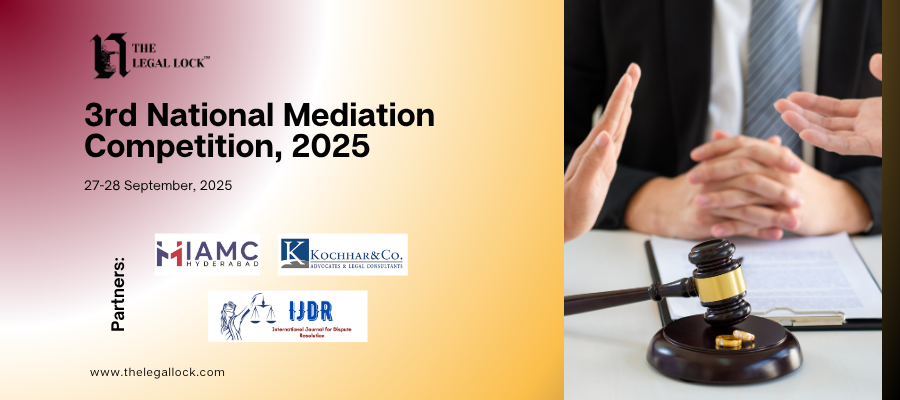Sarla Mudgal, & others. v. Union of India: Case Analysis

Table of Contents
Laws regarding marriages in India 2
Introduction
Marriage might be characterized as a legitimately and socially perceived joining between two people. As indicated by Black’s Law Dictionary, it is “the common status of one man and one lady participated in law forever, for the satisfaction of the lawful commitments forced on people whose association is predicated on the differentiation of sex.”
Thus, monogamy is a social standard that is perceived by general sets of laws all throughout the planet. Repudiations of this fundamental standard, like plural marriage or polygamy, are additionally criminal offences. The writer of this exposition breaks down India’s enemy of plural marriage enactment and notable cases.
Laws regarding marriages in India
- Hindu Marriage Act,
- 1955
The Hindu Marriage Act of 1955 was authorized to ensure the privileges of Hindu ladies and grooms who are joined by the sacred obligation of marriage in any service. The enactment doesn’t indicate the sort of service since a man or a lady may play out this strict demonstration in an assortment of ways. This rule was acquainted accordingly with numerous occurrences of people being alarmed or embarrassed for the sake of marriage misrepresentation. This enactment applies to a Hindu, Jain, Sikh, anyone who is a Hindu, Jain, Sikh, or Buddhist and is anything but a Muslim, Christian, Parsi, or Jew who is dependent upon another law. This law is relevant to anyone who is Hindu by birth or religion. Segment 2 of the Hindu Marriage Act contains an extensive meaning of Hindu.
- Indian Penal Code 1860
Segment 494 of the IPC gives the accompanying meaning of “Polygamy”: “Whoever weds again while having a spouse or wife alive regardless in which such marriage is void by reason of having happened during the existence of such husband or wife will be rebuffed with the detainment of one or the other portrayal for a term not surpassing seven years, and will likewise be responsible to a fine.” Bigamy has been condemned in India, where it’s anything but a non-cognizable and bailable offence.
The Indian Penal Code additionally perceives that covering the reality of the past marriage is a misrepresentation with respect to the subsequent spouse/husband concerned, and thusly, has been made culpable under area 495 of the IPC, as such individual submitting such demonstration will be rebuffed with the detainment of one or the other portrayal for a term not surpassing ten years.
Background
It is a landmark Judgement that proclaimed change to another confidence to get a subsequent union with being against crucial standards of equity, value, and great inner voice. It disallowed transformation to Islam to set up a lawful second marriage if the principal Hindu marriage isn’t repealed. It concluded that such relationships establish criminal offences under Section 494 of the IPC.
Our Constitution ensures the option to rehearse and claim any religion, which incorporates the option to change over to some other confidence not designated to a person upon entering the world. Nonetheless, in view of the variety of religions and individual laws, this provision is every so often mishandled. Plural marriage is culpable under the IPC for all religions, save those clans or gatherings whose individual law, like the Muslim law, approves polygamy.
Everything necessary to direct plural marriage is for an individual to forsake his religion and convert to Islam. Men participating in this conduct isn’t strange. As indicated by the Parsi Marriage and Divorce Legislation and the Special Marriage Act, any gathering’s subsequent marriage is invalid and void if the past marriage is yet substantial under this demonstration.
All in all, a subsequent marriage following a change to a religion that licenses polygamy is invalid. Notwithstanding, the Hindu Marriage Act, 1955 makes no notice of the situation with a believer who weds. It says that any ensuing marriage between two Hindus is invalid and void if their accomplice is yet alive and they have not separated at the hour of the resulting marriage.
The Supreme Court inspected this inquiry comprehensively in the milestone choice of Sarla Mudgal and Ors. v. Association of India, which settled the vulnerability around the rights, duties, and commitments of people who convert to another confidence to avoid the law. The court verified that an adjustment of confidence doesn’t give an individual the option to abuse the law and submit to plural marriage.
Facts of the case
Four petitions documented under Article 32 of the Indian Constitution were viewed simultaneously in the Supreme Court. To start, in Writ Petition 1079/89, in which there are two applicants. Sarla Mudgal was the principal applicant.
She is at the top of a perceived association considered Kalyani that works for the government assistance of ruined families and upset ladies. Candidate 2 was Meena Matur, who has been hitched to Jitender Mathur since 1978 and is the mother of three youngsters conceived illegitimately.
Solicitor 2 discovered that her companion changed over to Islam and wedded another lady, Sunita Narula moniker Fathima. She says her better half changed over to Islam just to wed Sunita, keeping away from Section 494 of the IPC. The responder attests that in the wake of changing over to Islam, he may have four spouses, whether his first wife stays Hindu.
Sunita Narula assumed the name was Fathima and documented another case, Writ Petition 347/1990, charging that she and the respondent changed over to Islam at the wedding and that an unmarried kid was conceived.
In any case, affected by Meena Mathur, the respondent changed over to Hinduism in 1988 and held his unique spouse and three youngsters. However long she kept up with her Muslim confidence, her better half was not needed to help her and she had no insurance under either close to home law.
Thirdly, the Supreme Court entered a supplication in Writ Petition 424/1992. The applicant, Geeta Rani, hitched Pradeep Kumar in 1988 as per Hindu customs. In December 1991, the Petitioner discovered that her life partner had changed over to Islam and wedded another lady, Deepa. The Petitioner states that his significant inspiration for changing over to Islam was to advance the chance of a subsequent marriage.
Sushmita Ghosh, the candidate in Civil Writ Petition 509/1992, wedded G.C. Ghosh as indicated by Hindu traditions in 1984. In 1992, her better half/respondent mentioned that she consents to a common assent separate, as he was done living with her.
The applicant was shocked, and after being inquisitive, he uncovered that he had changed over to Islam and wedded Vinita Gupta. She requested a controlling request against her significant other entering a subsequent marriage.
Issues involved
- Is it anything but a Hindu to wed a subsequent time in the wake of changing over to Islam?
- Is such a marriage authentic if the earlier marriage was not legitimately disintegrated and the principal spouse stayed a Hindu?
- Is the traitor liable for plural marriage under Section 494 of the Indian Penal Code?
Judgement
Alluding to Re Ram Kumari 1891 Calcutta 246, Ram Kumari in Budansa v. Fatima 1914 IC 697, and Nandi and Zainab v. The crown, the court established that transformation to Islam doesn’t naturally end the marriage. A marriage might be broken down exclusively by legal request.
The court noticed that under Hindu law before 1955, a marriage stays legitimate regardless of whether one of the life partners converts to Islam. Marriage isn’t naturally broken up.
Relationships in Hindu Law present explicit rights on the gatherings, and on the off chance that one of the companions converts to another religion and forces it, the other life partner’s privileges are obliterated, abusing the principles of equity, value, and great soul.
Considering the unique laws and interests of the two gatherings, the court noticed that the informed Muslim people group doesn’t wish to urge Hindu men to change over to Islam just to legitimize their subsequent marriage. Thus, they concluded that a Hindu spouse wedded as per Hindu Law can’t go into a subsequent marriage in the wake of changing over to Islam.
Second, the court inferred that the renegade mate would be liable of disregarding Section 494 of the IPC. The term ‘void’ is utilized contrastingly in the Hindu Marriage Act, 1955 and the Indian Penal Code. Transformation to Islam and resulting marriage won’t consequently break up the earlier Hindu marriage under the Act, however will give a reason to separate.
Nonetheless, in view of the segments of Section 494 talked about exhaustively in the first segment, it could be presumed that the subsequent marriage would be invalid and void and the renegade spouse would be blameable under the IPC.
The Supreme Court commented that the term ‘invalid’ determined in Section 11 of the Act has a limited importance, however it is utilized in a lot more extensive sense in Section 494 of the IPC. Transformation to another confidence doesn’t end the Hindu marriage all alone. No life partner is allowed to wed again before the disintegration of the past marriage.
If the subsequent marriage is discovered to be legal, it would abuse the Act’s soul. The second marriage of a Hindu companion would abuse the standards of equity, value, and great soul, thus would be dependent upon S. 494 of the Indian Penal Code.
Conclusion
The Indian overall set of laws recognizes plural marriage just when a male and a female are legitimately hitched. Even though live-in associations were simply sanctioned in India, living together with someone else while their first marriage is yet substantial is yet thought about polygamy.
Fusing UCC into the framework is a stage toward secularism, and the law-making body should take endeavours to consolidate it into the Indian general set of laws. Prof. H.L.A. Hart fostered the contemporary Analytical Legal Positivism hypothesis, where he recognized static and non-static social orders.










